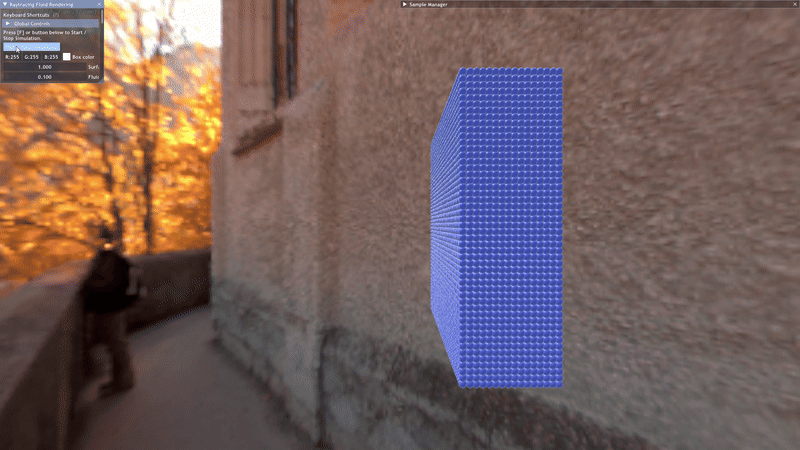Overview
This project is a real-time 3D fluid simulation using the Smoothed Particle Hydrodynamics (SPH) method. Implemented from scratch in C++, the simulation models fluid behavior by representing water as a collection of particles that interact through pressure, viscosity, and external forces. Particles are accelerated using force computations derived from SPH equations and integrated over time using a stable numerical solver.
To optimize neighbor searches, the simulation uses a Spatial Hash Grid, enabling efficient retrieval of nearby particles per frame. The simulation runs at 60 FPS with 1600 particles on a single-threaded CPU. The simulation is integrated into “Bark” my own physics engine.
The simulation now runs on a compute shader, offloading particle computations to the GPU for a massive performance boost. This upgrade enables real-time performance with thousands of particles, opening the door to more complex and visually rich fluid behavior.
The compute shader implementation was developed with the support of fellow Games Programming student at SAE Institute Geneva Olivier Pachoud, who specialized in raytraced rendering and used my fluid simulation. Click here to view his project
How it looks like
Here is a gif of the monothreaded CPU simulation with 1’200 particles:

Here is a gif of the compute shader simulation with 40’000 particles:

Bachelor’s thesis
What did I learn
-
Smoothed Particle Hydrodynamics (SPH): Gained a deep understanding of SPH principles, including density estimation, pressure and viscosity forces.
-
Spatial Hash Grid: Implemented an efficient spatial partitioning system to accelerate neighbor searches in large particle sets.
-
Numerical Stability: Learned to prevent instability in particle simulations by carefully tuning parameters and using stable integration methods.
-
Performance Profiling: Analyzed and optimized CPU performance to maintain real-time frame rates.
-
Parallel Computation: Transitioned physics computations to GPU via compute shaders to support larger-scale simulations.
-
Engine Integration: Embedded the simulation within my own physics engine “Bark”, improving modularity and system-level understanding of engine architecture.